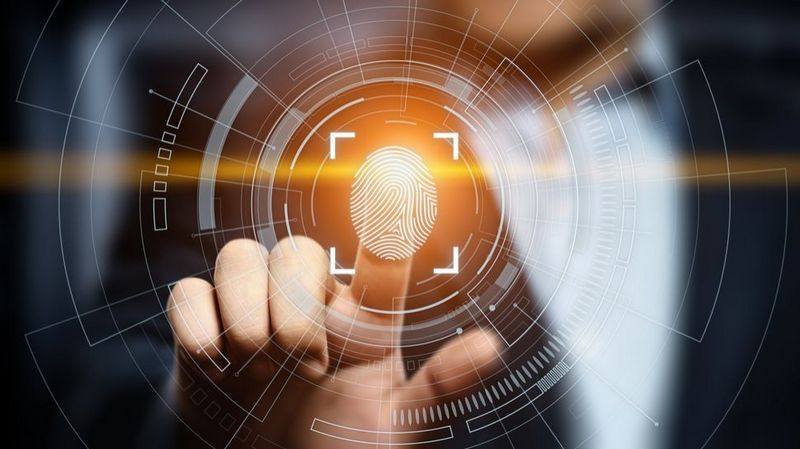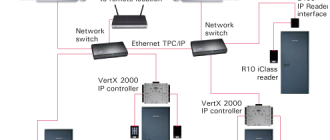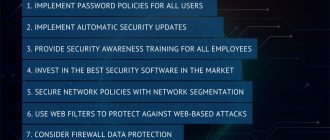
What is biometric security
In today’s digital age, the importance of robust security measures cannot be overstated. The traditional password-based authentication systems are no longer foolproof, as hackers continue to find ways to bypass them. This is where biometric technology comes into play. Biometric security, based on the recognition of unique physical or behavioral traits, offers a higher level of identification and authentication than traditional methods.
One of the most common forms of biometric recognition is the fingerprint identification. Each person’s fingerprints are unique, allowing for accurate and reliable authentication. This technology has been widely adopted in various industries, from mobile devices to access control systems.
Facial recognition is another biometric technology that has gained popularity in recent years. By analyzing and comparing facial features, this technology enables accurate identification and authentication. Applications for facial recognition range from smartphone unlocking to surveillance systems.
Biometric authentication provides many benefits compared to traditional methods. Firstly, it eliminates the need for remembering multiple passwords, which can be time-consuming and difficult to manage. Secondly, biometric data is difficult to replicate, making it much harder for hackers to gain unauthorized access. Moreover, biometric security systems often provide a fast and seamless user experience, improving convenience and productivity.
Overall, biometric technology offers a higher level of security and convenience in today’s fast-paced digital world. The applications of biometric security are vast and continue to expand across various industries. As the technology advances, biometrics will undoubtedly play a crucial role in ensuring the safety and integrity of sensitive information.
The Importance of Biometric Security in Today’s Digital World
Biometric security technology has become increasingly important in today’s digital world. With the rise of cybercrime and the constant threat of data breaches, traditional methods of identification and recognition are no longer sufficient to protect sensitive information.
Biometric security, which uses unique physical or behavioral characteristics to verify a person’s identity, offers a highly secure and reliable solution. One of the most widely used biometric technologies is fingerprint recognition. Every individual has a unique set of fingerprints, making it a highly accurate method of identification.
Another commonly used biometric technology is iris recognition. The complex patterns in a person’s iris are also unique, providing a highly secure way of identification. This technology has been widely adopted in various sectors, including government agencies and financial institutions, due to its high level of accuracy and reliability.
Facial recognition is another biometric technology that has gained popularity in recent years. With the widespread availability of cameras and advancements in facial recognition algorithms, this technology has become more accessible for various applications. Facial recognition can be used for access control, surveillance systems, and even digital payment systems, offering a convenient and secure way of identification.
One of the key advantages of biometric security is the difficulty of replicating or faking the unique characteristics it uses for identification. Unlike passwords or PIN codes, which can be stolen or forgotten, biometric data is inherently tied to an individual and cannot be easily replicated. This makes biometric security an effective deterrent against unauthorized access and fraud.
In addition to its security benefits, biometric technology also offers convenience and efficiency. With biometric authentication, individuals no longer need to remember multiple passwords or carry identification cards. Instead, they can simply use their unique biometric data to access systems or make transactions, saving time and reducing the risk of human error.
In conclusion, biometric security technology is of paramount importance in today’s digital world. Its ability to accurately and securely identify individuals through unique physical or behavioral characteristics makes it an essential tool in the fight against cybercrime and data breaches. The convenience and efficiency it offers further enhance its value, making it a highly valuable solution for various applications.
Enhancing Security with Unique Biometric Identification
In today’s digital age, enhancing security measures is of utmost importance. Traditional methods of authentication, such as passwords and PINs, are no longer sufficient to protect sensitive information. Biometric identification provides an innovative and reliable solution to this problem.
Biometric identification utilizes the unique characteristics of individuals, such as facial features, iris patterns, or fingerprints, to verify their identity. These biometric traits are highly specific to each person, making it difficult for unauthorized individuals to bypass security measures.
Facial recognition is one of the most commonly used biometric identification technologies. It analyzes various facial features, such as the distance between the eyes, the shape of the jawline, and the presence of specific landmarks, to authenticate an individual. Facial recognition systems have become increasingly accurate and versatile, making them suitable for a wide range of applications.
Iris recognition is another highly secure biometric identification technology. By scanning the patterns in an individual’s iris, which are unique to each person, a system can quickly and accurately verify their identity. Iris recognition is commonly used in high-security environments, such as airports and government facilities.
Fingerprint recognition has long been used as a biometric identification method. The ridges and valleys on an individual’s fingers form unique patterns that can be scanned and matched against a database for identification. Fingerprint recognition is widely used in various applications, from unlocking smartphones to accessing secure buildings.
Biometric identification provides several advantages over traditional authentication methods. Firstly, biometric traits cannot be easily forgotten or lost, unlike passwords or access cards. This eliminates the need for individuals to remember complex codes or carry physical tokens.
Secondly, biometric identification significantly reduces the risk of identity theft and unauthorized access. Since biometric traits are unique to each person, it becomes nearly impossible for imposters to replicate or fake them.
Overall, biometric identification offers enhanced security and convenience in various applications. Whether it’s securing personal devices, accessing restricted areas, or authenticating transactions, biometric technologies provide a reliable and efficient means of identification. As technology continues to advance, biometric identification is expected to become even more prevalent in our daily lives.
Improving Authentication and Access Control Systems
In today’s rapidly evolving digital landscape, identifying and recognizing individuals accurately and securely has become a primary concern. Traditional authentication methods, such as passwords and PIN codes, are no longer considered reliable or foolproof. This is where biometric technology comes in.
Biometric authentication relies on unique physiological or behavioral characteristics of an individual to verify their identity. By using biometric data, such as facial features, fingerprints, and iris patterns, organizations can significantly enhance their authentication and access control systems.
The use of facial recognition technology has gained significant popularity in recent years. By capturing and analyzing various elements of a person’s face, such as the spacing between the eyes and the shape of the jawline, facial recognition technology can accurately identify and authenticate individuals. This technology is particularly useful in high-security areas, where the risk of unauthorized access is a major concern.
Fingerprint recognition is another widely adopted biometric authentication method. Each individual has a unique pattern of ridges and valleys on their fingertips, making fingerprints a reliable and secure way to accurately identify and authenticate individuals. Fingerprint recognition technology is commonly used in smartphones, laptops, and physical access control systems.
Iris recognition technology is considered to be one of the most secure forms of biometric authentication. It relies on capturing and analyzing the unique patterns of an individual’s iris – the colored part of the eye. Iris recognition is highly accurate and resistant to forgery or duplication, making it suitable for high-security applications, such as government facilities and critical infrastructure.
By incorporating biometric authentication methods into existing access control systems, organizations can significantly enhance security and reduce the risk of unauthorized access. Biometric technology offers a higher level of accuracy and reliability compared to traditional authentication methods, and it is also more difficult to replicate or forge. This makes it an ideal solution for organizations looking to improve their authentication and access control systems.
| • Enhanced security and protection against unauthorized access |
| • Higher accuracy and reliability compared to traditional authentication methods |
| • Difficult to replicate or forge biometric data |
| • Convenient and user-friendly authentication process |
| • Potential cost savings by reducing reliance on passwords or physical tokens |
Biometric Security: A Key Factor in Fraud Prevention
Biometric security is a vital aspect of modern technology that plays a key role in fraud prevention. With the advancements in technology, traditional security measures such as passwords and PINs have become vulnerable to various fraudulent activities. Biometric authentication methods, such as facial recognition, fingerprint scanning, and iris recognition, offer a more secure and reliable way of verifying an individual’s identity.
One of the primary benefits of biometric security is its accuracy in user authentication. By analyzing unique physical or behavioral characteristics, biometric systems ensure that only authorized individuals gain access to sensitive information or secure locations. Facial recognition technology, for instance, captures and analyzes facial features, such as the shape of the eyes, nose, and mouth, to accurately verify a person’s identity. This high level of accuracy significantly reduces the chances of unauthorized access and fraudulent activities.
Moreover, biometric security provides a convenient and user-friendly authentication process. Unlike traditional methods that require users to remember complex passwords or carry ID cards, biometric systems rely on a person’s physical attributes that are inherently part of their identity. This eliminates the need for users to remember passwords or carry physical identification, enhancing user experience and convenience. With a simple touch or scan, individuals can authenticate themselves effortlessly.
In addition to its accuracy and convenience, biometric security also offers a higher level of security than other traditional methods. Physical attributes, such as facial features or fingerprints, are unique to each individual and cannot be easily replicated or forged. This makes it extremely difficult for fraudsters to bypass biometric systems and gain unauthorized access. Furthermore, biometric data is securely encrypted and stored, providing an added layer of protection against data breaches and identity theft.
In conclusion, biometric security plays a crucial role in fraud prevention. The use of biometric authentication methods, such as facial recognition, fingerprint scanning, and iris recognition, ensures accurate identification, while eliminating the need for complex passwords or physical IDs. The uniqueness of biometric features provides a robust defense against fraudulent activities, making biometric security a key factor in safeguarding sensitive information and secure locations.
Biometric Technology: A Safer Alternative to Passwords
In today’s digital age, the need for secure access to personal information has become paramount. Traditional methods of recognition and identification, such as passwords, have proven to be vulnerable to hacking and fraud. This is where biometric technology comes in. Biometric technology offers a safer and more reliable way to authenticate individuals.
Biometric technology uses unique physical or behavioral characteristics to identify and verify individuals. Some common examples of biometric technology include facial recognition, iris scanning, and fingerprint scanning. These biometric features are unique to each individual and difficult to replicate or forge, making them highly secure.
In contrast to passwords, biometric technology eliminates the need to remember complex strings of characters, which can easily be forgotten or stolen. Instead, biometric authentication is based on something that is inherently part of a person, making it more convenient and secure.
Facial recognition is one of the most widely used forms of biometric technology. It analyzes the unique features of a person’s face, such as the shape of their eyes, nose, and mouth, to create a digital representation called a template. This template is then compared to a stored database of templates for identification purposes.
Another form of biometric technology is iris scanning, which analyzes the patterns in a person’s iris. The iris, which is the colored part of the eye, has unique patterns that are formed by muscles and connective tissues. These patterns are difficult to replicate, making iris scanning a highly accurate form of identification.
Fingerprint scanning is another commonly used form of biometric technology. Each person has a unique pattern of ridges and valleys on their fingertips, which can be captured and analyzed for identification purposes. Fingerprint scanning offers a high level of accuracy and has been used for years in forensic investigations.
Biometric technology offers a range of benefits compared to traditional password-based authentication. It provides a higher level of security, as biometric features are difficult to duplicate or forge. It also offers convenience, as individuals do not need to remember passwords or worry about forgetting them. Additionally, biometric technology can provide real-time identification and verification, making it ideal for time-sensitive applications.
In conclusion, biometric technology offers a safer alternative to passwords. By leveraging unique physical or behavioral characteristics, such as facial features, iris patterns, and fingerprints, biometric technology provides a higher level of security and convenience for authentication purposes.
Protecting Personal Data with Biometric Authentication
Biometric authentication provides a more secure and reliable method of identity verification compared to traditional forms of identification. With biometric technology, personal data is protected through the use of unique physical characteristics that are difficult to forge or replicate.
One of the most common forms of biometric authentication is facial recognition. This technology analyzes an individual’s facial features to verify their identity. By comparing the facial characteristics captured during the authentication process with a stored template, the system can determine whether the person is who they claim to be. Facial recognition offers a high level of accuracy and is widely used in applications such as airport security and smartphone unlocking.
Another popular biometric authentication method is iris recognition. This technology uses the unique patterns in a person’s iris to authenticate their identity. The iris has a complex structure that is not easily duplicated, making it a highly secure method of identification. Iris recognition is used in various applications, including border control and access control systems.
Fingerprint recognition is another well-known form of biometric authentication. Every person has a unique set of ridges and valleys on their fingertips, which can be used to identify individuals with a high level of accuracy. Fingerprint recognition is commonly used in mobile devices, law enforcement, and secure access systems.
Biometric technology provides several advantages when it comes to protecting personal data. Unlike traditional forms of identification like passwords or PINs, biometric information cannot be easily forgotten or shared with others. Additionally, biometric authentication reduces the risk of identity theft, as biometric data is unique to each individual and cannot be easily replicated.
Furthermore, biometric authentication offers convenience and speed. Users can quickly and easily authenticate their identity by simply presenting their physical characteristics, eliminating the need to remember complicated passwords or carry identification cards. This makes biometric authentication a user-friendly and efficient security solution.
In conclusion, biometric authentication technology plays a crucial role in protecting personal data. By utilizing facial recognition, iris recognition, or fingerprint recognition, individuals can securely prove their identity in various applications. Biometric authentication offers a high level of security, convenience, and reliability, making it an ideal solution for protecting personal information in today’s digital world.
Biometrics: The Future of Identity Verification
Biometrics is a cutting-edge technology that is revolutionizing the field of identity verification. Utilizing unique biological and behavioral traits, biometric authentication and recognition systems provide a secure and efficient means of identifying individuals.
Facial recognition is one of the most widely recognized biometric technologies. By analyzing and comparing the unique features of a person’s face, facial recognition systems can accurately identify individuals with a high level of confidence. This technology is becoming increasingly popular in various industries, including law enforcement, airport security, and mobile device authentication.
Fingerprint recognition is another widely used biometric technology. A person’s fingerprints are unique to them, making them an excellent identifier for identity verification purposes. Fingerprint recognition systems capture and analyze the patterns and ridges on a person’s fingers, providing a highly accurate means of identification.
The security provided by biometric technology is unparalleled. Unlike traditional methods of identification that rely on passwords or PINs, which can be easily forgotten or stolen, biometric authentication relies on something that cannot be easily replicated or forgotten – the biological and behavioral traits of an individual.
Biometric identification systems offer a wide range of applications. In addition to security purposes, biometrics is also used for access control, attendance tracking, and fraud prevention. Some industries are even exploring the use of biometrics for personalized marketing and customer engagement.
With advancements in technology, biometric identification systems are becoming more affordable and accessible, making them viable for a wide range of applications. As the technology continues to evolve, we can expect to see even more innovative uses for biometrics in the future.
In conclusion, biometric technology is the future of identity verification. Its ability to provide secure and accurate identification through unique biological and behavioral traits makes it an invaluable tool in today’s digital world. Whether it is facial recognition or fingerprint authentication, biometrics is changing the way we verify identities and enhancing security in various industries.
Ensuring Privacy and Accuracy in Biometric Systems
In today’s technology-driven world, biometric security has become a widely used method for ensuring the safety and protection of sensitive information. Biometric recognition systems, such as facial, iris, and fingerprint identification, offer a high level of security by using unique physical characteristics to verify an individual’s identity.
One of the key concerns when it comes to biometric technology is privacy. As biometric data is highly personal and cannot be easily changed, it is essential to ensure that this information is securely stored and protected from unauthorized access. To address this concern, biometric systems employ encryption techniques to safeguard stored data and use secure communication protocols to transfer information.
Accuracy is another important aspect of biometric security. The effectiveness of a biometric system relies on its ability to correctly identify and authenticate individuals. False positive and false negative rates are two common metrics used to measure the accuracy of a biometric system. A low false positive rate ensures that unauthorized individuals are not granted access, while a low false negative rate ensures that authorized individuals are not denied access.
To enhance the accuracy of biometric systems, advanced algorithms are used to analyze and compare biometric data. These algorithms take into account several factors, such as lighting conditions, pose variations, and image quality, to ensure reliable recognition. Additionally, regular maintenance and calibration of biometric devices are necessary to maintain accuracy over time.
Overall, biometric security offers numerous benefits, such as convenience, efficiency, and the ability to eliminate the need for traditional passwords and PINs. However, ensuring privacy and accuracy in biometric systems remains crucial for their successful implementation and widespread adoption.
Biometrics in Banking: Securing Financial Transactions
Biometric technology, such as facial recognition, fingerprint recognition, and iris authentication, has revolutionized the banking industry by providing a secure and efficient means of identifying customers and securing financial transactions.
Traditional methods of authentication, such as passwords and PINs, have become increasingly susceptible to fraud and hacking. Biometric technology offers a more reliable and convenient solution, as it uses unique physical attributes to verify the identity of individuals.
Facial recognition technology analyzes a person’s facial features, such as the distance between the eyes and the shape of the nose, to create a biometric template that can be used for identification. This method is non-intrusive and can be easily integrated into existing banking systems.
Fingerprint recognition is another widely used biometric technology in banking. It scans and analyzes the unique patterns and ridges present on an individual’s fingertips, allowing for highly accurate identification. This method is particularly useful for securing financial transactions at ATMs or when accessing online banking platforms.
Iris authentication is considered one of the most secure biometric technologies available. It uses the unique patterns in an individual’s iris to create a biometric template, which can be used for authentication. This method is highly accurate and virtually impossible to replicate.
By incorporating biometric technology into their systems, banks and financial institutions ensure enhanced security for their customers. Biometric authentication not only provides a more secure means of identification but also offers increased convenience, eliminating the need for passwords or PINs that can be easily forgotten or stolen.
In addition to securing financial transactions, biometric technology also helps prevent identity theft and fraud. The use of biometrics enables banks to quickly and accurately verify the identity of customers, reducing the risk of unauthorized access to accounts or fraudulent activities.
Overall, biometrics technology plays a significant role in the banking sector by providing a secure and efficient means of authentication and identification. Its implementation ensures the protection of financial transactions and enhances the overall customer experience in the banking industry.
Biometric Security in Healthcare: Ensuring Patient Privacy
In the healthcare industry, maintaining patient privacy and data security is of utmost importance. Biometric security offers a reliable solution, using advanced technologies such as facial recognition, iris scanning, and fingerprint authentication.
Facial recognition technology is increasingly being used in healthcare to ensure patient privacy. It allows for quick and accurate identification, making it easier to match patients with their medical records, ensuring the right treatment is provided. By using facial biometric authentication, healthcare facilities can prevent unauthorized access to patient data and protect sensitive information.
Iris scanning technology is another biometric security measure that can be utilized in healthcare settings. Iris patterns are unique to each individual, making it an ideal biometric identifier. By utilizing iris recognition technology, healthcare providers can ensure secure access to patient data, preventing unauthorized users from gaining access to sensitive information. This technology offers an additional layer of security and helps to prevent medical identity theft.
Fingerprint identification is a widely used biometric authentication technology that can also be implemented in healthcare. Fingerprint patterns are unique to each person, providing a reliable means of identification. By using fingerprint recognition technology, healthcare organizations can verify the identity of patients and healthcare professionals, ensuring the security of patient records and preventing unauthorized access.
Biometric security technology has numerous applications in healthcare, ensuring patient privacy and data security. By utilizing facial recognition, iris scanning, and fingerprint authentication, healthcare providers can protect sensitive information, prevent unauthorized access to patient data, and mitigate the risk of medical identity theft. These technologies provide a secure and reliable means of identification and authentication, enhancing the overall security of healthcare systems.
Biometrics in Law Enforcement: Fighting Crime with Technology
In recent years, biometric technology has revolutionized the field of law enforcement, providing new tools and methods for fighting crime. Biometric identification, such as iris recognition and fingerprint authentication, has become an invaluable tool for enhancing security and capturing criminals.
With biometric authentication, law enforcement agencies can accurately and quickly identify individuals, helping to solve crimes and prevent further criminal activity. The unique characteristics of each person’s biometric data, such as their iris or fingerprint patterns, make it nearly impossible for criminals to impersonate someone else.
One of the key benefits of biometric security is its ability to accurately match individuals to their identities. This means that law enforcement officers can easily determine whether a suspect is involved in criminal activities or if they have a previous criminal record. Biometric technology has also helped streamline the identification process, reducing the time it takes to identify suspects and speeding up investigations.
Another advantage of biometrics in law enforcement is its potential to prevent crime. By implementing biometric security measures in public places such as airports, train stations, and government buildings, law enforcement agencies can deter criminals and enhance overall security. The presence of biometric systems acts as a strong deterrent, as potential criminals know that their actions will be closely monitored and their identities easily traced.
Furthermore, biometric technology can be used to enhance surveillance efforts. With the help of facial recognition and other biometric tools, law enforcement agencies can quickly analyze vast amounts of surveillance footage, identifying persons of interest more efficiently. This can prove to be crucial in finding and apprehending criminals, as well as preventing future crimes.
In conclusion, biometrics in law enforcement has proven to be a powerful tool in the fight against crime. The advanced technology used for biometric identification provides accurate and efficient results, helping to identify suspects, prevent crime, and enhance overall security. As technology continues to advance, biometric technology will undoubtedly play an even greater role in making our communities safer.
Q&A:
What is biometric security?
Biometric security refers to the use of unique biological characteristics of an individual, such as fingerprints, iris patterns, or voice recognition, to authenticate their identity and grant access to certain systems or physical spaces.
What are the advantages of using biometric security?
Biometric security offers several advantages over traditional authentication methods. Firstly, it is more difficult to forge or replicate biometric traits compared to passwords or ID cards. Secondly, biometric characteristics are unique to each individual, making it a highly reliable form of identification. Lastly, biometric authentication is convenient and fast, as it eliminates the need for remembering passwords or carrying physical keys.
What are some common applications of biometric security?
Biometric security is widely used in different applications. It is commonly used in smartphone authentication, where fingerprints or facial recognition unlock the device. Biometrics is also utilized in access control systems for buildings or restricted areas. Moreover, it is employed in border control systems to enhance security and verify the identity of travelers.
Is biometric security safe and reliable?
Biometric security is generally considered safe and reliable. However, like any security system, it is not without its limitations. For example, a person’s biometric features can change over time due to factors such as injuries or aging. Additionally, there is always the possibility of false positives or false negatives in biometric authentication systems. Overall, the level of safety and reliability depends on the implementation and quality of the biometric technology used.
What are the potential concerns or drawbacks of biometric security?
There are a few potential concerns associated with biometric security. Firstly, storing biometric data requires strong encryption and security measures to avoid unauthorized access or breaches. Secondly, there are ethical and privacy concerns regarding the collection and storage of personal biometric information. Lastly, reliance on biometric authentication alone can be problematic in situations where a person’s biometric feature is temporarily or permanently unavailable, such as in case of injury or disability.
What is biometric security and why is it important?
Biometric security refers to the use of unique physical or behavioral characteristics, such as fingerprints, voice patterns, or facial recognition, for authentication and access control purposes. It is important because it provides a higher level of security compared to traditional password-based systems as biometric traits are difficult to forge or fake.






